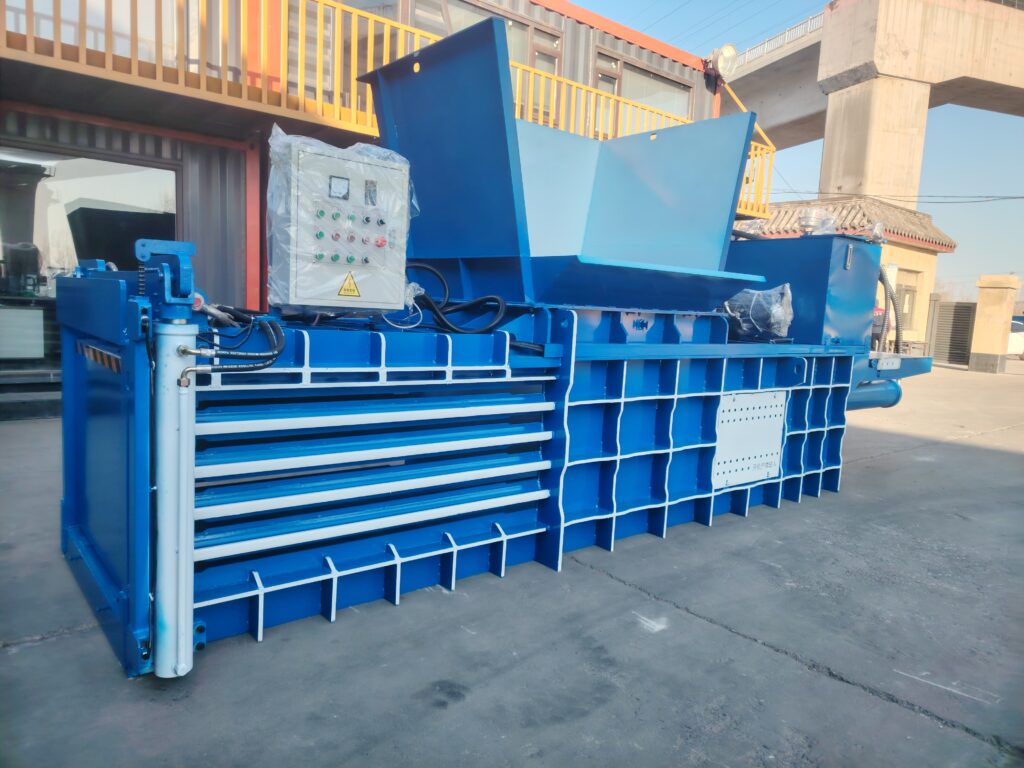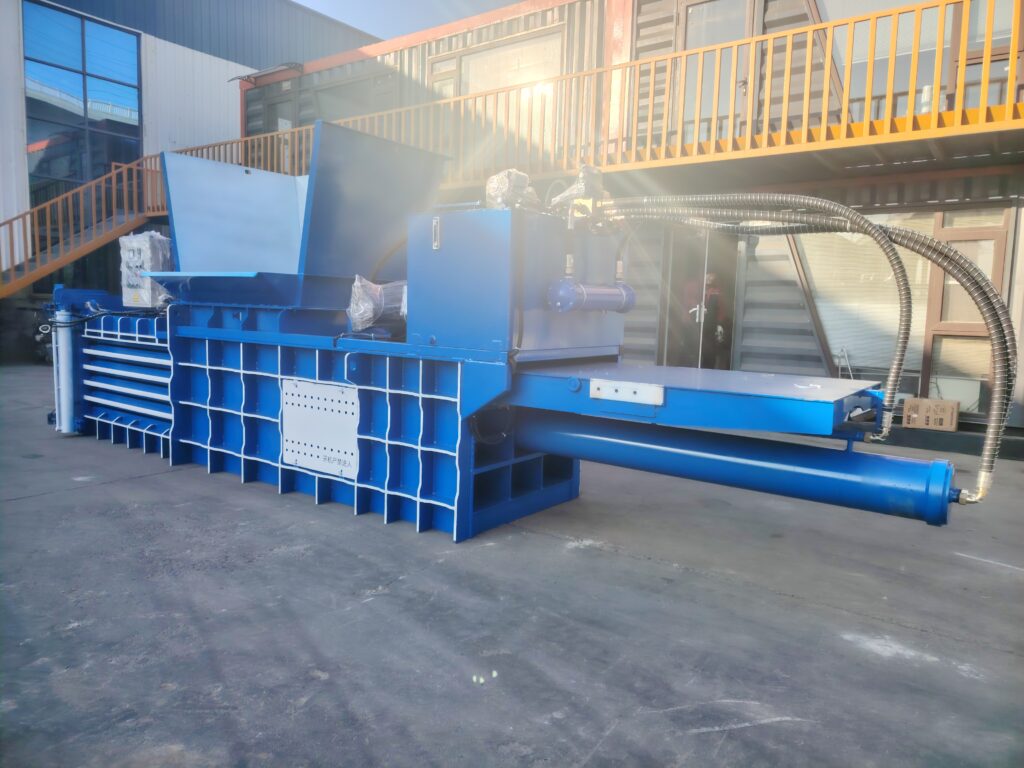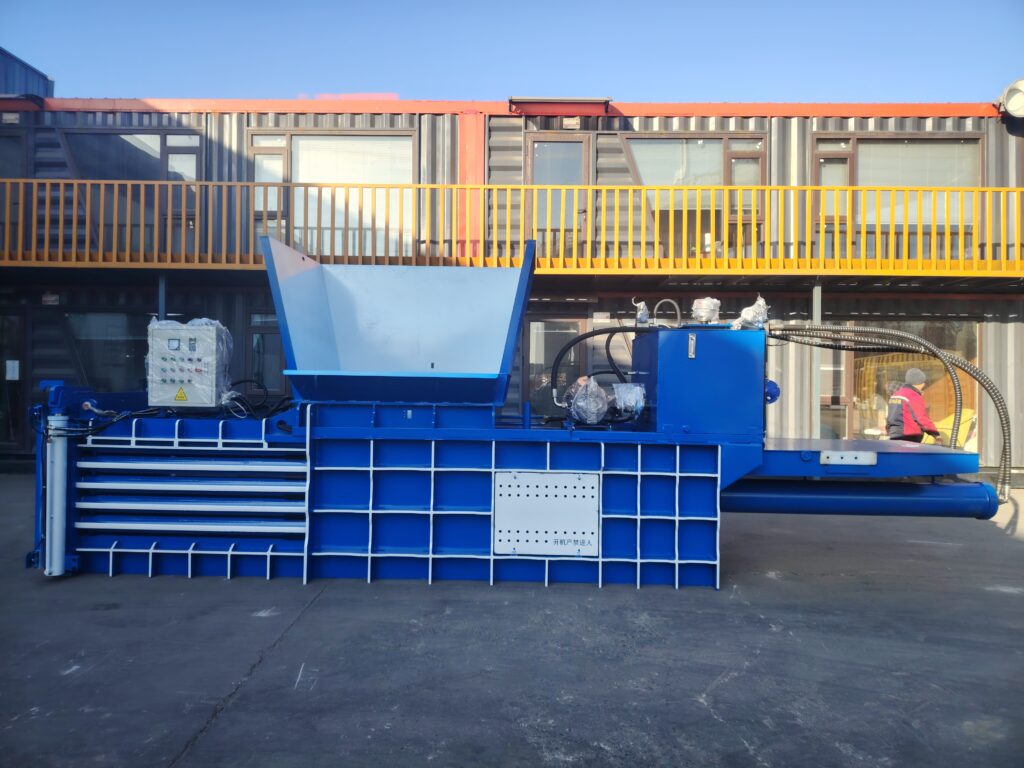What is a horizontal baler?

A horizontal baler is a waste compaction machine designed to compress large volumes of recyclable materials—such as cardboard, paper, plastic film, and other packaging waste—into dense, easy-to-handle bales. Unlike vertical balers, which load and press materials from above, horizontal balers have a side feed opening and a horizontal press plate, enabling continuous or semi-continuous feeding.
This design makes them ideal for high-volume recycling operations in warehouses, distribution centers, printing plants, and manufacturing facilities. Horizontal balers can be:
-
Semi-automatic – requiring some operator input for feeding and tying.
-
Fully automatic – handling feeding, compressing, tying, and ejecting with minimal supervision.
Most machines include:
-
A hopper for material loading.
-
A pressing chamber with a hydraulic compression system.
-
An automatic or manual tying mechanism using steel wire or plastic straps.
-
Optional conveyor systems for automated feeding.
Models vary by pressing force (in tons), bale size, and output capacity. Some large-scale machines can produce bales weighing 600–1000 kg continuously.
Horizontal balers help reduce waste volume, lower transport costs, and improve workplace cleanliness. Businesses can also sell well-compacted bales to recycling companies—turning waste into revenue while meeting environmental and sustainability goals.
Why Use a Horizontal Baler?
Investing in a horizontal baler offers multiple benefits:
-
Significant Volume Reduction – Compress loose materials into dense, uniform bales for easier storage and transport.
-
Lower Operating Costs – Reduced trips and storage space mean savings on logistics and warehousing.
-
Improved Efficiency – Fully automatic models free up staff for other tasks while the machine runs.
-
Cleaner & Safer Workplace – Minimize loose waste, reduce fire hazards, and prevent clutter.
-
Revenue from Recyclables – High-quality bales fetch better prices in the recycling market.
-
Environmental Compliance – Meet waste management regulations and corporate sustainability targets.
-
Scalable Solutions – Choose a machine that matches your space, output needs, and budget.
In short, a horizontal baler isn’t just waste equipment—it’s a long-term cost-saving, revenue-generating, and eco-friendly investment.
How to use a horizontal baler?

Operating a horizontal baler safely and effectively typically involves these steps:
-
Prepare the Machine – Install it in a spacious, well-ventilated area with room for feeding, bale ejection, and maintenance. Ensure all electrical and hydraulic connections are set up by a qualified technician.
-
Load Materials – Feed cardboard, paper, plastic film, or other recyclables into the hopper manually or via a conveyor.
-
Start the Compression Cycle –
-
Automatic models: The baler feeds and compresses materials without operator input.
-
Semi-automatic models: The operator triggers compression using the control panel.
-
-
Bale Tying –
-
Automatic machines tie bales automatically with wire or straps.
-
Semi-automatic machines require manual tying through provided channels.
-
-
Eject the Bale – The finished bale is pushed out onto a pallet or floor for collection.
-
Remove & Store – Use a forklift or trolley to move the bale to storage or shipping.
-
Maintenance – Regularly check hydraulic oil, clean the chamber, and inspect moving parts for wear.
Safety tips: Always wear protective gear, keep clear of moving components, and shut down the baler before any maintenance.
Conclusion:
A horizontal baler streamlines waste handling, saves labor, generates recycling revenue, and supports sustainability efforts. Whether you’re running a busy warehouse or a large manufacturing facility, the right baler can transform your waste management process into an efficient, profitable operation.

